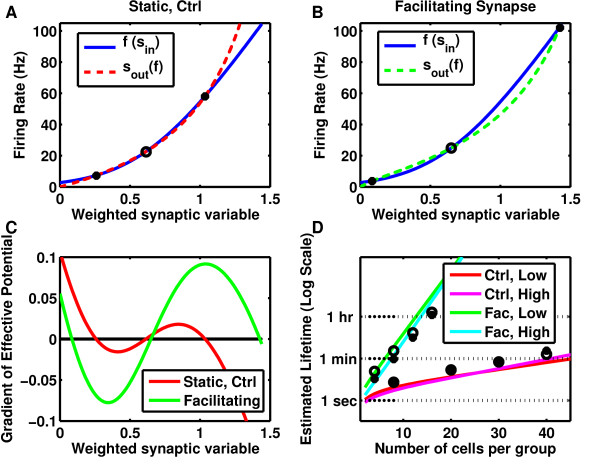Fig. 4.
Synaptic facilitation enhances the stability of discrete memory states. a The firing rate curve (solid, blue) and synaptic feedback (dashed red) for a system with feedback strength optimized for bistability in a group of cells with static synapses. Firing rate curve follows Eq. (34) with , , , which is the best fit to the leaky-integrate and fire neuron used in the simulations and described in Table 2d. Feedback strength is optimized for bistability with . b Same firing rate curve (solid, blue) as in a but synaptic feedback (dashed green) via facilitating synapses with feedback strength optimized for bistability with . a–b Solid circles indicate stable fixed points separated by an unstable fixed point (open circle). c Difference between firing rate and feedback curves in a and b determine the basis for the gradient of an effective potential. Note the enhanced areas between fixed points (zero crossings) producing a larger potential barrier when synapses are facilitating (green) compared to static (red). d The lifetime of both the low activity state and the high activity state increases exponentially with system size, but a given level of stability is achieved with far fewer cells when the synapses are facilitating (solid curves, analytic results; filled and open circles simulated results for the high and low activity states, respectively)

